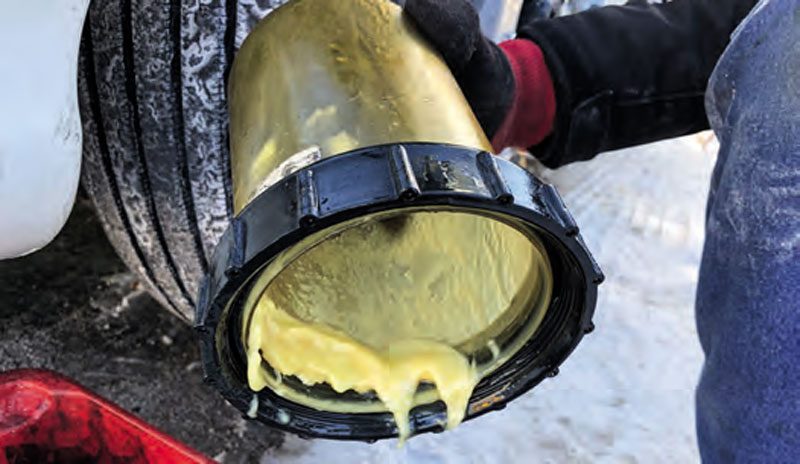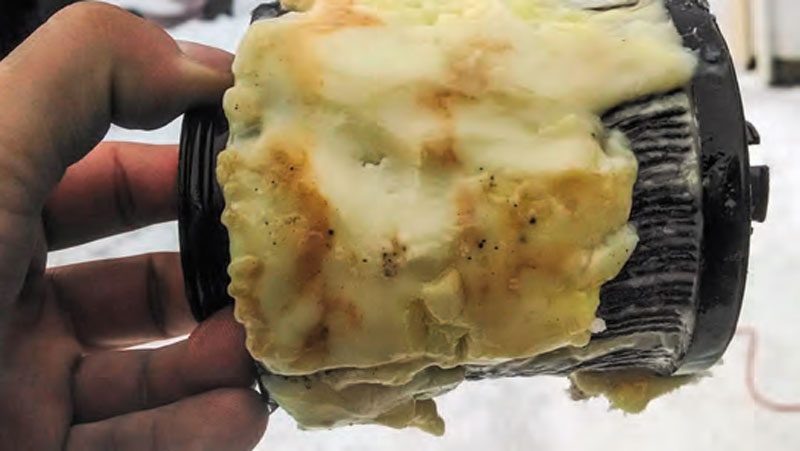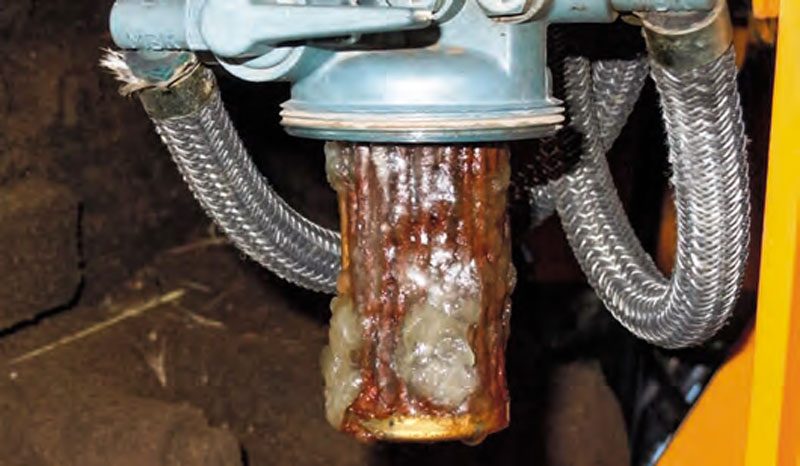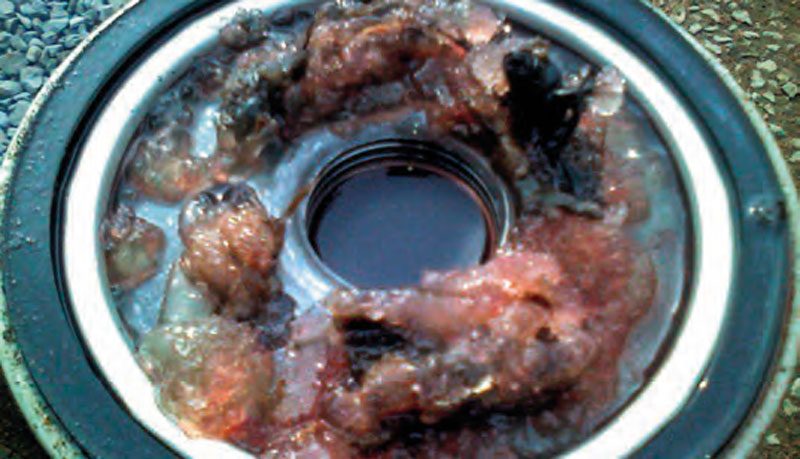
Is frozen diesel impossible in the Antipodes? Think again… Here’s everything you need to know about how cold weather affects diesel.
Here in the Antipodes, winter conditions are incredibly mild compared with places like Alaska, home of the Ice Road Truckers, where trucks are expected to operate well below sub-zero temperatures. But one of the biggest challenges ice road truckers face is preventing fuel from freezing.
Surprisingly, in some parts of New Zealand and Australia, trucking operators can face similar challenges in severe winter conditions. In certain areas, diesel fuel may get cold enough for the wax it contains to start solidifying, sometimes known as frozen fuel.
All diesel fuels contain wax, a natural component of crude oil. One benefit of the wax is it boosts the fuel’s ignition quality. Nevertheless, suppose the cold weather causes enough wax to solidify (or crystallise)? In that case, the fuel lines, filters and strainers in a diesel engine may become blocked and make it difficult or impossible to start and operate the truck. Hence, the phenomenon known as ‘waxing’ the fuel.
Not all diesel fuel is the same. Fuel companies make dedicated ‘winter diesel’ blends, specially formulated with lower cloud points than regular diesel, to prevent waxing from happening.
The cloud point refers to the temperature below which wax in diesel will begin to go cloudy and solidify. The cloud point for diesel varies seasonally, with diesel manufacturers producing diesel with a cloud point up to 4°C lower during the winter months. However, this temperature still may not be low enough to prevent waxing from occurring in cold alpine regions.


To better combat cold-related fuel problems, it’s worth investigating what happens to fuel at low temperatures. Firstly, let’s clarify some of the terms used when discussing temperature’s impact on diesel fuel.
Waxing: As we touched on earlier, solidfiying wax – with fuel literally turning to jelly – is relatively rare. Waxing occurs when the paraffin wax in diesel solidifies because of a reduction in temperature. The fuel temperature generally has to stay below -3°C for 48 to 72 hours.
The paraffin wax in diesel solidifies when subjected to extended cold temperatures below freezing, giving the fuel a cloudy appearance. Even so, fuel can begin to cloud at temperatures as high as 0°C, but it will continue flowing. Fuel must remain very cold for long periods before it will actually wax up. It’s not uncommon to hear long-distance drivers from northern regions complain about their fuel waxing up when they have to spend a night or two in southern areas during winter. However, that’s probably not the actual problem: the more likely situation is ice or solidified paraffin wax in the fuel filter. But more on that later.
Cloud point: This is a set of sanctioned tests to conclude the cloud point of the temperature of a sample of diesel fuel, at which the naturally present paraffin wax in highland or alpine diesel fuel begins to crystalise. These tiny particles of floating solidified wax give the fuel a cloudy appearance. Average cloud point temperatures range from -2°C to -4°C, while summer diesel may be as high as 7°C, and it’s dependent on several factors related to the base stock and refining processes used to make diesel fuel.
Pour point: This is a crucial quality specification for diesel fuels. Specifically, it measures the tendency of a fuel to become more viscous and resist flowing when cold. The pour point is measured slightly above the temperature when a fuel ceases to flow because of the formation of wax crystals that increase its viscosity. Pour point specifications in the Australian Standard are the maximum allowable temperature. But for diesel truck fuel, the lower pour point is more desirable.
Cold filter plugging point: This is a measurement based on a standardised test that indicates the rate of diesel fuel flow through a standardised filtration device for a predetermined length of time when cooled. The point at which the sample fails to go through the filter within the specified time is the CFPP.


Ice in your lines
While ‘waxing up’ may be a common phrase, it’s probably not the primary reason a truck no longer runs. Instead, the more likely culprit is water, or more fittingly, ice. Frozen water can easily clog fuel lines and fuel filters, which starves the engine of fuel. In addition, water freezes at a much higher temperature than fuel, so if you’re experiencing problems at temperatures ranging from 0°C to -6°C, you’re more likely to have ice in your fuel lines or fuel filters. A quick way to diagnose the cause is to remove the filter and look inside for ice. Frozen wax, on the other hand, is gooey and thick.
Water is nearly always present in diesel fuel to some degree. A substantial quantity can accumulate in diesel storage tanks or truck tanks if it isn’t removed periodically. Since water is heavier than fuel, it settles at the bottom of the fuel tank.
You’d be okay if the water stayed there, even frozen, but it never does. Instead, warm fuel melts the water, which sloshes around in the tank when the truck moves. However, it breaks it up into finer droplets that can freeze as they travel through fuel lines exposed to the cold outside air.
It’s more likely that any exposed 90° metal bend in the fuel line is where water droplets gradually collect and slow the flow of fuel, and the water, in turn, freezes, eventually blocking the fuel line. Of course, the same thing can happen with airlines when the air dryer isn’t working, but that’s another story.
If any ice crystals make it past a 90° bend, the fuel filter filtration media is the next point. In days gone by, tiny ice crystals quickly passed through the media when the filter media measured 10s of microns. However, with today’s two-micron filters, the filtre easily traps ice. If enough ice gathers on the filter media, fuel will no longer flow through the filter, and the engine will stall or not start.
Remember that replacing your fuel filters with a more porous media is certainly not the answer. Modern high-pressure fuel-injection systems have very tight internal clearances, and even the slightest debris can cause significant and costly damage – far more expensive than being held up from the ice in the fuel filter damaging the pump or injectors.
The better solution to lessen your chances of being grounded by humble ice crystals is regularly draining the water from your fuel tanks. But, of course, that should also include any on-site fuel storage tanks.
Finally, fuel producers suggest that if you’re entering a colder climate this winter, fill up a little closer to your final cold stopover destination to minimise the risk of your fuel waxing up.
Read more
Ash Shanks
0 Comments1 Minutes
Rodney Pearson
0 Comments2 Minutes
A couple of Commers
0 Comments1 Minutes
Scania EV rolls in
0 Comments11 Minutes





